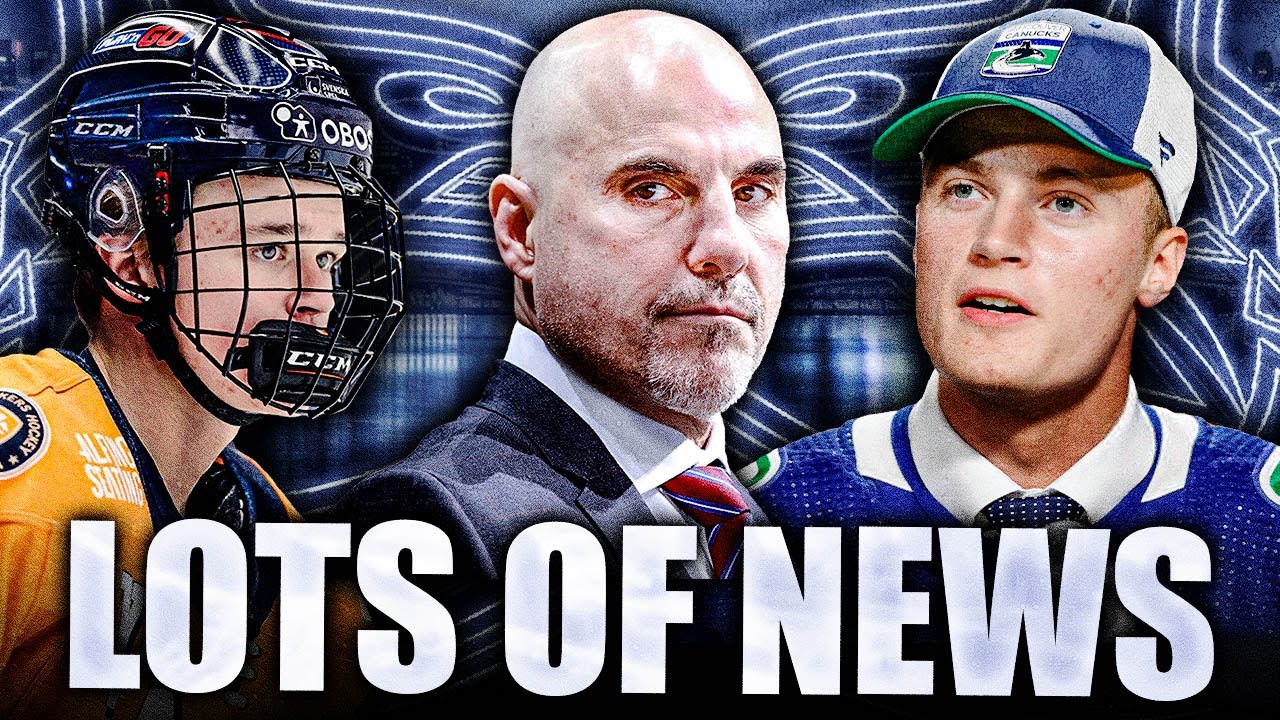
In the high-stakes world of professional hockey, there`s an enduring axiom that resonates with every aspiring player: it`s incredibly challenging to reach the National Hockey League, but an even greater feat to secure a permanent place. For the Vancouver Canucks, this philosophy finds its present-day embodiment in two compelling figures: young Swedish defencemen Elias Pettersson and Tom Willander. As the hockey calendar turns, both are poised at a critical juncture, aiming not just to knock on the NHL`s door, but to kick it wide open and settle in for the long haul.
The Sophomore`s Resolve: Elias Pettersson`s Path to Permanence
Elias Pettersson, at 21 years old, isn`t embarking on his first taste of the NHL. Last season, he emerged as a pleasant surprise, defying expectations by spending a significant portion of his North American debut with the Canucks. This early exposure, while validating his immense talent, now serves as both a blessing and a crucible. The challenge is no longer merely to impress, but to consistently demonstrate growth and an unwavering commitment to improvement. As Canucks player development coach Mikael Samuelsson, himself a seasoned Swede, astutely observes, Pettersson’s strength lies in his mindset: “He got a taste [of the NHL] last year, but he knows he`s not done with development. Petey probably surprised people last year, including himself. But he’s like, I’m not done. He’s humble. He plays within his limits. He doesn`t think he is something he’s not.” This measured perspective, valuing continuous self-refinement over premature self-celebration, is the hallmark of players destined for longevity in the demanding professional arena.
The Rookie`s Ambition: Tom Willander`s Leap of Faith
Joining Pettersson in this pivotal pursuit is 20-year-old Tom Willander, a prodigy fresh from the collegiate ranks of Boston University. An 11th overall draft pick two years prior, Willander arrives with a different kind of pressure – the weight of high expectations and the immediate need to adapt to the ferocity of professional hockey. His journey is not about proving he belongs after a surprising call-up, but about proving he belongs *now*. Samuelsson`s advice to Willander echoes a similar sentiment of patience and intentional development: “He has a lot to prove if he wants to make the NHL right away… If he manages to take his time, and doesn’t just expect to make the NHL right away, [and] wants to develop himself on a daily basis, I think he could be the guy who’s here to stay as well.” Willander also possesses a valuable asset: he`s a natural right-shot defenceman, a commodity that is perpetually in demand and could provide him a distinct advantage in a league constantly seeking balance on its blue lines.
A Shared Vision: The Swedish Connection on Defence
Intriguingly, Pettersson and Willander are not just parallel narratives; they are intertwined. They will begin this season as a defensive pairing during prospect games against their Seattle Kraken counterparts, a reunion from their days together on Sweden’s World Junior team. This established familiarity could prove invaluable as they navigate the intensity of professional tryouts. Willander, ever the competitor, even recounts a recent intra-squad tennis match where he and Pettersson (who Willander noted had an unfair advantage, having “never touched a tennis racket before”) lost as doubles partners – a lighthearted glimpse into their competitive spirit that extends beyond the rink. On the ice, however, the synergy is serious. Willander praises Pettersson’s game: “I think he’s a great hockey player and definitely the type of defenceman that I think is very easy to play with… A defence-first type of guy [who] makes the first half of the ice a lot easier to manage.” Both players are described as physically strong and superior skaters, embodying the modern mobile defenceman.
Navigating the Depth Chart: Opportunity on the Blue Line
The path to a full-time NHL roster spot is rarely devoid of obstacles. The Canucks` defensive corps is already formidable, featuring the likes of superstar Quinn Hughes, the reliable Filip Hronek, and seasoned veterans such as Marcus Pettersson, Tyler Myers, and Derek Forbort. Currently, Pierre-Olivier Joseph appears to be the primary incumbent providing the immediate benchmark for these young prospects. However, the Canucks` blue line does possess room for talent, particularly on the right side where Willander`s natural handedness could be a significant differentiator. The upcoming training camp in Penticton, B.C., will be the proving ground, a crucible where potential is forged into performance.
“If you’re around good players, it’s always a good thing. And if you have the right mindset, which you need if you’re going to become an NHL player, you take advantage of that. And they will push each other. They will feed off each other, too, especially if they play together.”
— Mikael Samuelsson, Canucks Player Development Coach
As Samuelsson emphasizes, the shared journey and mutual challenge will be a powerful catalyst. “They will push each other. They will feed off each other, too, especially if they play together. They want to be the go-to pairing in this tournament… and then feed off that coming into main camp.” This internal competition, fueled by shared ambition and complementary skill sets, could be the very ingredient that propels both Elias Pettersson and Tom Willander from intriguing prospects to indispensable pillars of the Vancouver Canucks` defensive future. The organization, no doubt, is counting on it, and the hockey world awaits to see if these two Swedes can truly write their names into the Canucks` long-term script.

